While the origin of the word ‘Punk’ is somewhat obscure, it is believed that the
word was first printed in 1575 in a ballad called Simon The Old
Kinge, or sometimes Old Simon The King. The song’s narrator suggests that
being drunk is “a sin, as it is to keep a punk.”
The word has since had a variety of meanings, including: to mean something or someone worthless or unimportant; a young ruffian, hoodlum, an inexperienced youth; a young male partner of a gay man; an apprentice, especially in the building trades; a passive or submissive male inmate, especially one who is used for sex by another male inmate.
The first known use of the expression 'Punk' to describe a band or a form of music was in the March 22, 1970 edition of The Chicago Tribune when Ed Sanders
of the band The Fugs referred to his debut solo album as "punk rock -
redneck sentimentality." The term
then made an appearance in music journalism in a 1970 essay titled, The Punk Muse:
The True Story of Protopathic Spiff Including the Lowdown on the Trouble-Making
Five-Percent of America’s Youth by Nick Tosches in Fusion. He
described a music that was a “visionary expiation, a cry into the abyss of
one’s own mordant bullshit,” its “poetry is puked, not plotted.”
In November 1970, electronic proto-punk duo Suicide were the first known group to refer to their music as being "punk music" on their promo flyers, while in a December 1970 issue of CREEM magazine, critic Lester Bangs referred to Iggy Pop as "That Stooge punk." (In 1968 Lester Bangs wrote a novella titled Drug Punk, influenced by William Burroughs’ book, Junky, in which there is a line, “Fucking punks think it’s a joke. They won’t think it’s so funny when they’re doing five twenty-nine on the island.”
However, the most widely accepted version of the term "punk rock" is believed to have been coined by rock critic David Marsh, when he used it to describe the music of ? and the Mysterians in the May 1971 issue of CREEM magazine. But despite Marsh's version of punk being a million miles away from what would eventually become the posturing acts of punk as we know it today, this exciting new term was soon being adopted by many rock music journalists to describe the raw musical sounds that were being heard all around them.
10 years earlier, from 1963-1967, American 'garage'/'proto punk' bands like The Sonics, The Iguanas, and MC5 were playing their own brand of rock’n’roll, essentially laying down the foundations for the emergence of what punk was about to become. And by the early to mid 1970's, acts such as New York Dolls, The Stooges, Ramones, Television, Patti Smith and Blondie were taking the raw energy of their 60's counterparts to the next level, and began producing the distinctive sound of what was to become the first wave of USA punk.
In 1976 Punk magazine creators John Holmstrom and Legs McNeill were using the term "punk rock" on a regular basis, leading to its worldwide acceptance as the definition for the new bands that were producing this energetic sound. Meanwhile in London The Sex Pistols had already formed and thanks to their theatrical antics on Bill Grundy’s Today (December 1, 1976), and the subsequent attention they received from the British press, the term "punk" was officially accepted as a major cultural phenomenon.
A vibrant punk scene soon developed and, along with The Sex Pistols, UK bands like the The Clash, The Damned, The Adicts and The Buzzcocks were soon being recognised as the vanguard of a new musical movement.
The punk rock movement quickly began to spread all around the world and what followed were raw, fast-paced and confronting images and sounds full of defiance, nihilism, anger and energy. And while the music - half sung, half screamed - savagely attacked the status quo making them instant villains, the fashion also took on a life of its own. Ripped jeans and fishnet tights, leather jackets, patches, obscene t-shirts, bondage pants, safety pins, razor blades, studs, animal prints and tartan quickly became the punk dress code and image. Noses, lips and ears were pierced with safety pins, make-up was bold and bright, and hair was vibrantly coloured and spiked for gravity-defying height and maximum effect.
The political and social agendas of both the USA and the UK had a major part to play in this punk explosion. In America the economy was slipping, and the hardships of the economic recession combined with the continuing rise of inner-city poverty meant that crime rates, the use of recreational drugs, and mistrust in the American government among blue collar workers was on the rise. While in the UK, the iron rule of Prime Minister Margaret Thatcher was causing devastation in the social fabric of the industrial cities, where unemployment and poverty reached unprecedented levels and racial tensions were brooding.
Punk rock historian Piero Scaruffi, in his book A History of Rock Music (2003), talks about the differences between the USA and UK punk scenes.
“The difference between the UK and the USA was both quality and quantity: the USA had many more teenagers that were truly frustrated and identified with the new wave and punk-rock, whereas the UK had fewer punks that were truly punks but those who were...were extremely violent. In the USA the masses ignored the phenomenon: it was definitely not cool to be a punk. In the UK the masses loved the phenomenon: it soon became cool to dress like a punk. Therefore, in a few months London alone had many more punk bands than the entire USA.
In a few months both the underground and the mainstream press were afloat in reportages about the punk scene, mirroring closely what had happened in ‘swinging London’…. The real punks had enough loathing for society in their lungs to scream above the fad. They were cynical, ferocious, anarchic, brutal, amoral and illiterate. They were often described as the new "barbarians", mainly because they were. Their live performances were the musical equivalent of throwing up in a toilet. They hated everybody and everything. It wasn't anger, it wasn't depression: it was sheer loathing. They wanted the fight, and they never missed a chance to get in trouble.
Their music was the ultimate in simplicity: just scream a refrain as loud and possible and as fast as possible. Arrangements became an embarrassing trait of the bourgeois society. Cute melodies were off-limits. Maniacal attitudes were welcome. Songs shrank and shrank: basically, the title was most of the song. It was the ultimate in ‘generational anthem’: the song was a motto, a slogan and little else. In Britain it became a combination of fashion and of unemployment. Add the pre-existing "hooligan" phenomenon and a passion for drinking and fighting, and ‘punk’ came to mean something much more serious than the Ramones ever intended: it basically ignited an explosive mixture of social and economic problems.”
The Birth of Melbourne Punk:
While the early American and British punk movements have been well documented, what many people may not know is that Australian musicians played and recorded some of the earliest punk music in history and the Melbourne independent music scene of today has its roots firmly based in the music and culture of Australian inner-city regions from the mid to late 1970s.
In 1972, five years before punk officially emerged, dances and concerts around Melbourne became battlegrounds between rival 'sharpie' gangs, fueled by the music of the Coloured Balls. The lead singer of the Coloured Balls and Godfather of heavy rock in Australia, Lobby Loyde, has been hailed as a punk influence who has inspired many Australian bands to step forward and play as loud and aggressively as they could.
With an aesthetic push that fused hippie philosophy to explosive rock'n'roll, the band ended up being one of the most misunderstood bands of the early 1970s. The mainstream media branded them as "anti-social misfits", due in no small degree to their single-minded performances, the adoption of the (then prevalent) sharpie haircut and the aggressive nature of their sharpie following.
In 1974 Radio Birdman from Sydney and The Boys Next Door from Melbourne began to form, while in 1975/76, Brisbane bands The Saints, The Leftovers and Razar were also forming. In 1976 The Saints were to become the first punk band outside of the USA to release a recording, the single ‘(I’m) Stranded’. It had limited impact at home, but the British music press recognized it as a groundbreaking record. Meanwhile In Sydney, bands such as Last Words, The Hellcats, The Psychosurgeons, Lipstick Killers, Johnny Dole & The Scabs and The Thought Criminals were starting to form, under the influence of local and overseas punk acts.
In 1976 Radio Birdman also released their EP, ‘Burn My Eye’, described by critic Ian McCaleb as the “archetype for the musical explosion that was about to occur”. While on the other side of Australia, in Perth, germinal punk act The Cheap Nasties had also formed. In 1977 Birdman offshoot, The Hitmen, had started to gig while Ian Rilen and Steve Lucas formed the longevitous X. By the end of 1977 ‘supergroup’ Young Charlatans had formed in Melbourne out of the ashes of earlier bands and recorded the first version of the Rowland S. Howard song 'Shivers', while fully-fledged punk bands like Reals and Babeez had also been formed.
The result was an explosion of small independent scenes in Melbourne and elsewhere in Australia. Along with their anti-establishment and defiant lyrics that questioned society and made a statement about the social agenda of the day, these bands were soon leaving a mark upon disillusioned youth who were fed up with the suburban system and needed a rebellious outlet to express their individuality and creativity.
It had only been a few years since the Vietnam War had ended and the youth of the western world were restless and needed a change in attitude, dress and music. The rise of a new middle class was rising in the developing world, and the focus was shifting from the social activism of the sixties to social activities for one's own pleasure, save for environmentalism, which continued in a very visible way.
Although in Australia, things weren't as depressing as the USA and UK, politics was still very much on the agenda. In 1977 Labor’s free-thinking Gough Whitlam had just been dismissed as Prime Minister, only to be replaced by the Liberal party’s conservative Malcolm Fraser, while Victoria was also under the conservative Liberal watch of then Premier Rupert Hamer. Society’s perception of established institutions such as the nuclear family and religion started to be questioned, and trust in the Australian government would also begin to lose ground during this time.
Meanwhile Aboriginal people were actively engaged in the political process in order to regain control of traditional lands, sacred sites and maintain a viable place for themselves in contemporary Australia, while the sexual revolution had brought with it many major developments, including the contraceptive pill, which had a huge impact on the awareness of social / interactional relationships.
With all of the change that was in the air it was clear that the hippie culture, with all of its free love and LSD, needed to be replaced with something else. Music was changing and evolving, and thanks to underground record stores like Archie 'n' Jugheads and Climax Records, and independent radio stations like 3RMT and 3PBS, many new punk and independent musicians from the USA and Europe were being heard right here in Melbourne.
The culture of the day was ripe and the timing was right for a Punk Rock Revolution!
“The Babeez were performing a dirty rough version of 'Hate' and I think the Parky took exception to the line about not giving a fuck. How he picked it through the noise I still don't know. It was a great moment in early, raw punk history”. (Paul - Australian Punk website)

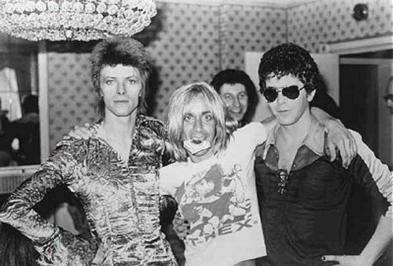
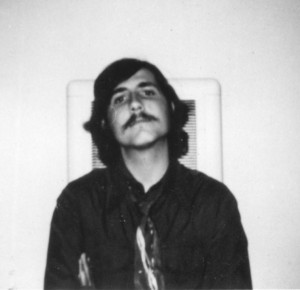
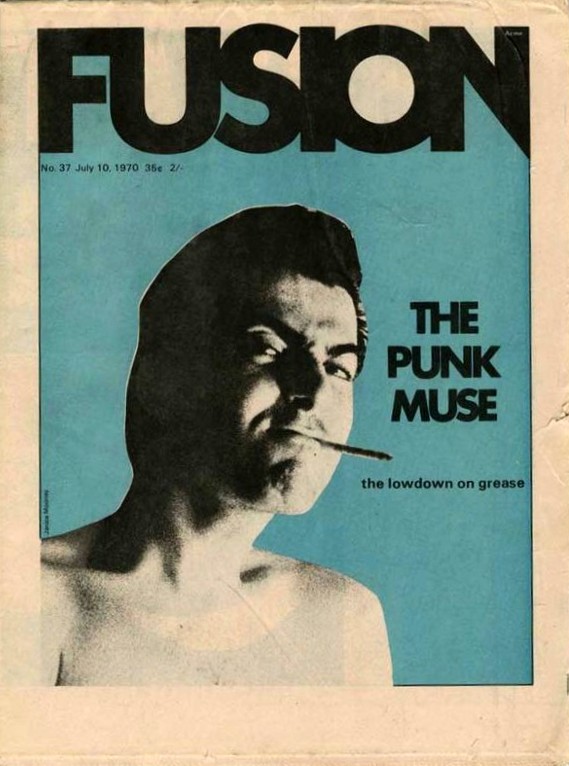
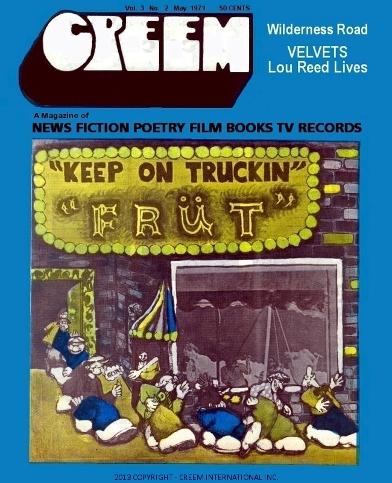
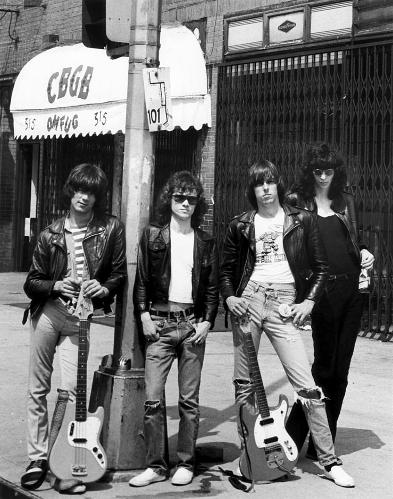
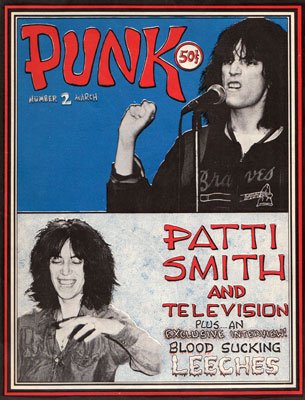
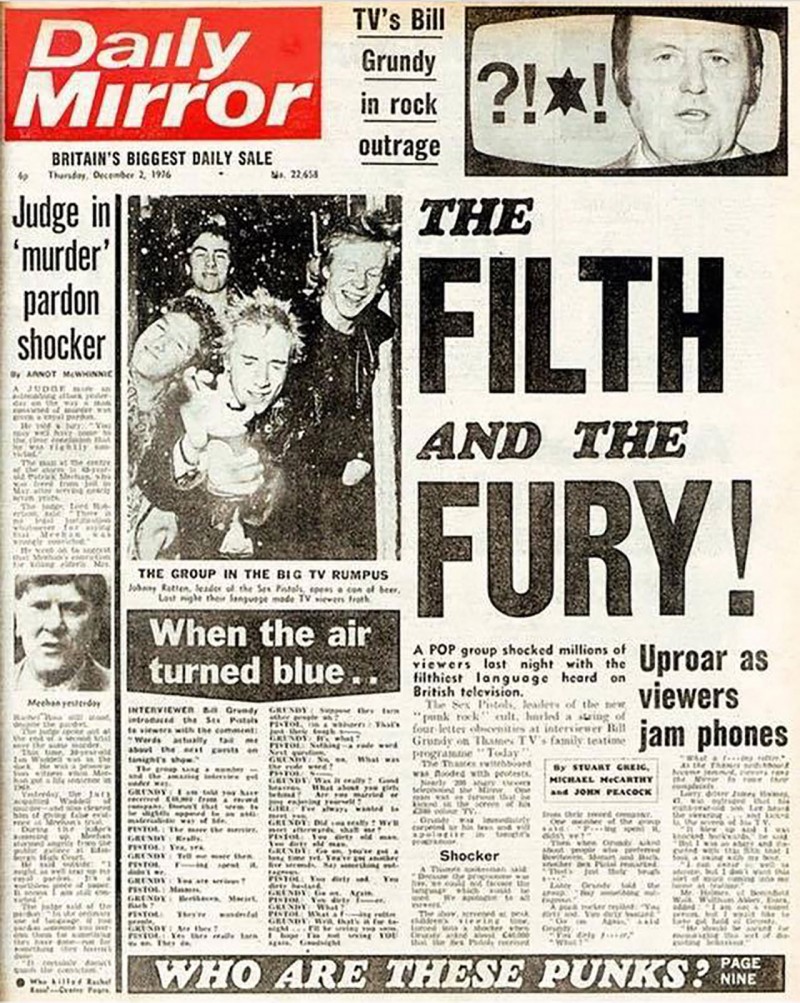
Daily Mirror, 1976 - Source: Open Culture
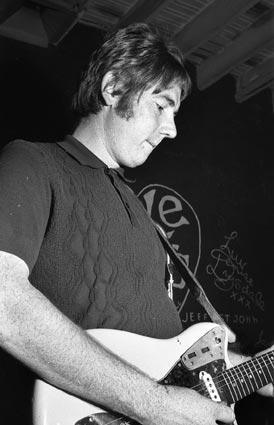
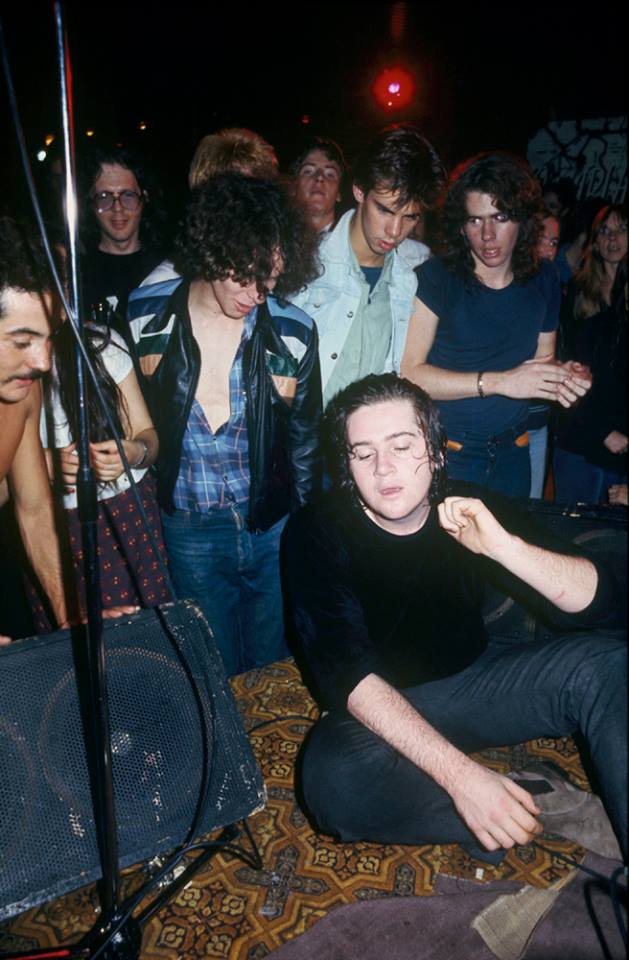
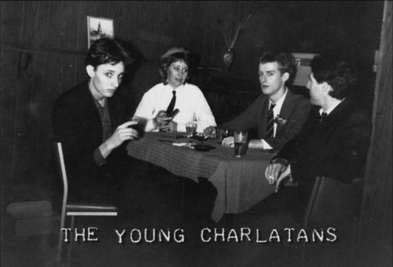
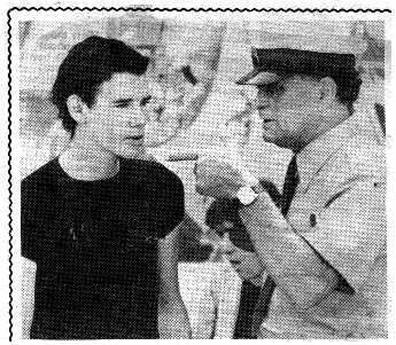
- Main Image - Punk definition
- Background Image - Spred (James Freud) playing at Punk Gunk, 1977 - Source: Timothy Hughes
- MC5, 1963-67 - Source: Rokpool
- David Bowie, Iggy Pop, and Lou Reed, 1970 - Photo by Mick Rock - Source: Andrew Crago
- Lester Bangs, early 1970s - Source: Ugly Things
- Fusion cover featuring The Punk Muse, 1970 - Source: Flashbak
- Creem Magazine cover, May 1971 - Source: CREEM USA
- Ramones, 1975 - Photo by Bob Gruen
- Punk Magazine cover, March 1976 - Source: Punk Magazine
- Daily Mirror, 1976 - Source: Open Culture
- Lobby Loyde, 1972 - Source: Frankie Loyde
- Nick Cave, The Saints, The Tiger Room c.1977 - Photo by Rennie Ellis © Rennie Ellis Photographic Archive
- The Young Charlatans, 1977/78 - Photo by Peter Milne
- Babeez lead singer, Adam Five & police officer 1977/78 - Source: Gavin Quinn
- Scaruffi, Piero (2003), A History of Rock and Dance Music 1951 - 2008, iUniverse,Inc.
- Paul - Source: Australian Punk website
- http://www.scaruffi.com/history/purchase.html
- http://spartucusjones.hubpages.com/hub/The-Orgins-of-Punk-Rock
- http://rockcriticsarchives.com/interviews/davemarsh/01.html
- https://fastnbulbous.com/punk/
- http://www.nosuchthingaswas.com/2017/09/punk-is.html
- http://ugly-things.com/growing-up-in-the-dark-ages-the-early-years-of-lester-bangs/
- https://flashbak.com/the-story-of-punk-421670/
- http://en.wikipedia.org/wiki/Punk_subculture
- http://en.wikipedia.org/wiki/Punk_rock
- https://en.wikipedia.org/wiki/Punk_rock_in_Australia
- http://en.wikipedia.org/wiki/Lobby_Loyde
- http://en.wikipedia.org/wiki/Sharpies_%28Australian_subculture%29
- http://en.wikipedia.org/wiki/The_Saints_%28band%29
- Alternative Rock - P.29
- http://en.wikipedia.org/wiki/Punk_rock_in_Australia
- For a detailed time line of punk rock click HERE